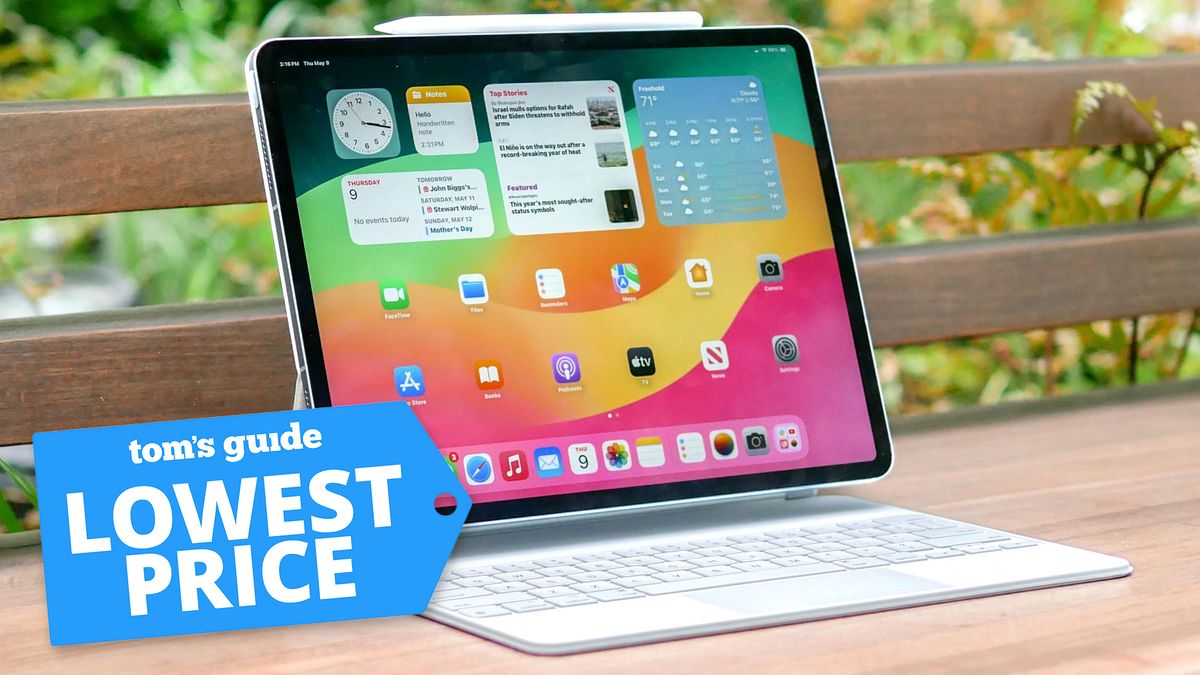
In today’s digital age, concerns about cybersecurity are more prevalent than ever. With the increasing use of tablets for personal and professional purposes, many users are left wondering, “Can an iPad be hacked?” It is essential to understand the potential security risks for iPad users in order to protect sensitive information and prevent unauthorized access to personal and professional data.
As technology continues to advance, hackers are constantly developing new methods to exploit vulnerabilities in digital devices, including iPads. From phishing scams to malware attacks, there are various ways an iPad can be vulnerable to hacking. Understanding these common hacking methods is crucial for iPad users to take proactive measures in safeguarding their devices and data.
This article will explore the various ways an iPad can be vulnerable to hacking, provide real-life examples of iPads being hacked, examine Apple’s security measures, offer practical tips for securing your iPad, discuss potential consequences of iPad hacking, and provide a step-by-step guide on what to do if you suspect your iPad has been compromised. By understanding the risks and learning how to mitigate them, users can better protect their iPads from potential hacking threats.
Common Hacking Methods
When it comes to the question “Can an iPad be hacked?” the answer is yes, just like any other electronic device, an iPad can be vulnerable to hacking. There are various methods that malicious individuals can use to exploit security weaknesses and gain unauthorized access to an iPad. One common hacking method is through malicious apps or software. Users may unknowingly download apps or software that contain malware, which can then compromise the security of their device.
Another common method is through phishing attacks and social engineering. This involves tricking users into providing sensitive information such as login credentials or personal details, which can then be used to gain access to their iPad. Additionally, unsecured Wi-Fi networks can also pose a risk, as hackers can intercept data being transmitted over these networks.
It’s important for iPad users to be aware of these potential vulnerabilities and take proactive steps to secure their devices. By understanding the common hacking methods and how they can be exploited, users can better protect themselves against potential threats.
| Hacking Method | Explanation |
|---|---|
| Malicious Apps or Software | Hackers use apps or software containing malware to compromise iPad security. |
| Phishing Attacks and Social Engineering | Hackers trick users into providing sensitive information that grants access to their iPads. |
| Unsecured Wi-Fi Networks | Hackers intercept data transmitted over unsecured Wi-Fi networks. |
Case Studies
In recent years, there have been several high-profile cases of iPads being hacked, leading to significant consequences for the users involved. These case studies serve as a sobering reminder of the potential risks that come with using iPads and the importance of taking proactive measures to ensure their security.
Hacking via Malicious Apps
One common method through which iPads can be hacked is the installation of malicious apps. In 2019, an incident occurred where several iPad users unknowingly installed a fake version of a popular app from the App Store, which contained malware. This led to sensitive personal information being compromised and exploited by hackers. Such cases highlight the need for users to exercise caution when downloading apps and to verify their authenticity before installation.
Phishing Attacks
Another prevalent method hackers use to infiltrate iPads is through phishing attacks. In one instance, iPad users fell victim to a phishing scam that involved receiving fraudulent emails posing as legitimate organizations. When unsuspecting users clicked on links or provided personal information, their iPads became susceptible to hacking and data theft. This emphasizes the importance of being wary of unsolicited emails and verifying the legitimacy of any requests for personal information.
Public Wi-Fi Vulnerabilities
Many iPad users have also experienced hacking incidents while using public Wi-Fi networks. Hackers can exploit vulnerabilities in these networks to gain unauthorized access to iPads and intercept sensitive data transmitted over them.
A notable case involved individuals using their iPads in coffee shops and airports, only to have their device compromised by cybercriminals who were eavesdropping on the insecure network. This serves as a cautionary tale for users to avoid connecting to unsecured public Wi-Fi networks and instead use virtual private networks (VPNs) for added protection.
These case studies reinforce the notion that no device is immune from hacking attempts, including iPads. It’s crucial for users to be aware of these potential threats and take steps to secure their devices effectively.
Apple’s Security Measures
Apple’s iOS, the operating system on which iPads run, is known for its strong security measures. The built-in security features of iPads play a crucial role in preventing hacking attempts and ensuring the safety of user data. One of the key components of iPad security is the hardware and software integration that creates a secure environment for data processing and storage. Additionally, regular software updates provided by Apple are essential for addressing any vulnerabilities that hackers may exploit.
The Touch ID and Face ID features on newer iPad models add an extra layer of security, making it more difficult for unauthorized users to gain access to the device. These biometric authentication methods provide a secure and convenient way for users to unlock their iPads and authorize transactions without having to enter a passcode.
Furthermore, Apple’s App Store ecosystem is tightly controlled, with all apps undergoing a rigorous review process before being made available to users. This significantly reduces the risk of malicious apps that can potentially compromise an iPad’s security. Additionally, Apple’s sandboxing feature ensures that each app operates independently within its designated space, preventing them from accessing each other’s data without authorization.
Overall, while no device can be completely immune to hacking attempts, Apple’s comprehensive approach to security in iPads greatly reduces the likelihood of successful attacks. By leveraging a combination of hardware and software-based security measures, iPad users can have confidence in the protection of their personal information and sensitive data.
| Security Feature | Description |
|---|---|
| Touch ID/Face ID | Biometric authentication methods providing secure access to the device |
| App Store Review Process | Rigorous vetting process for apps to mitigate risks associated with malicious software |
| Sandboxing | Prevents unauthorized access between different apps on the device |
Tips for Securing Your iPad
Keep Your Software Updated
One of the easiest and most effective ways to secure your iPad against hacking is to ensure that your device’s software is always up to date. Apple regularly releases updates that include security patches to address any potential vulnerabilities. By keeping your iPad’s operating system and apps updated, you can significantly reduce the risk of falling victim to hacking attempts that exploit known security flaws.
Use Strong Passwords and Biometric Authentication
It may seem obvious, but using strong, unique passwords for your iPad and any accounts linked to it is crucial for protecting your data from unauthorized access. In addition, take advantage of biometric authentication features such as Touch ID or Face ID to add an extra layer of security. These methods can make it much harder for someone to gain unauthorized access to your device.
Be Cautious With Public Wi-Fi Networks
Public Wi-Fi networks can be a hotbed for hackers looking to intercept data being transmitted over the network. When using public Wi-Fi on your iPad, be cautious about the websites you visit and avoid logging into sensitive accounts or entering payment information unless you are on a secure connection. Consider using a virtual private network (VPN) when connecting to public Wi-Fi networks, as this can encrypt your internet traffic and provide an additional layer of security.
By following these practical tips, iPad users
Potential Consequences of iPad Hacking
When considering the potential consequences of iPad hacking, it is crucial to understand the wide range of repercussions that can result from a successful hacking attempt. From personal data theft to financial loss, the impact of iPad hacking can be significant. Below are some potential ramifications of a successful hacking attempt on an iPad:
- Data theft: One of the most concerning consequences of iPad hacking is the theft of personal and sensitive information. This can include everything from passwords and banking details to private communications and photos. Once in the hands of hackers, this information can be exploited for various malicious purposes.
- Financial loss: If hackers gain access to payment information or banking details stored on an iPad, it can lead to financial loss for the user. Unauthorized transactions, identity theft, and fraudulent charges are all possible outcomes of a successful hacking attempt.
- Compromised privacy: Hacked iPads can result in compromised privacy for users. Hackers may gain access to personal conversations, location data, and other private information, violating the user’s sense of security and confidentiality.
It is important for iPad users to recognize that the potential consequences of hacking extend beyond just personal inconvenience. These ramifications can have long-lasting effects on individuals, ranging from financial hardship to emotional distress. Therefore, taking proactive measures to secure an iPad against hacking is essential for safeguarding both personal data and overall well-being.
Steps to Take if Your iPad Is Hacked
If you suspect that your iPad has been hacked, it’s crucial to take immediate action to mitigate the potential damage and prevent further unauthorized access to your device and personal data. Here are some steps you can take if you believe your iPad has been compromised:
1. Disconnect from the internet: The first thing you should do if you suspect that your iPad has been hacked is to disconnect it from the internet. This can help prevent any ongoing unauthorized access to your device and limit the hacker’s ability to steal more of your information.
2. Change your passwords: After disconnecting from the internet, it’s important to change the passwords for all of your accounts, including email, social media, banking, and any other apps or services you use on your iPad. Use strong, unique passwords for each account to reduce the risk of further hacking attempts.
3. Update your software: Check for any available software updates for your iPad and install them. Software updates often include security patches that can help address vulnerabilities that hackers can exploit.
It’s important to note that these steps are just initial measures to contain a potential hacking incident. After taking these steps, you should consider reaching out to Apple support or a trusted IT professional for further assistance in assessing and addressing any security issues on your iPad. Staying informed about potential hacking methods and regularly updating your iPad’s security measures can also help minimize the risk of future hacking attempts.
Conclusion
In conclusion, the security risks for iPad users are real and should not be taken lightly. As we have seen, there are various common hacking methods that can put iPads at risk, and real-life case studies have shown the potential consequences of falling victim to hacking. While Apple has implemented built-in security measures to protect iPads, it is still important for users to take proactive steps to secure their devices.
It is clear from our exploration of this topic that securing an iPad goes beyond relying solely on Apple’s security features. Users must also take personal responsibility by implementing best practices for securing their device, such as enabling strong passwords, keeping software updated, and being cautious of suspicious links or downloads. By following these tips, users can significantly minimize the risk of their iPad being hacked.
Ultimately, the potential consequences of iPad hacking are serious and can greatly impact users’ privacy and security. This is why staying vigilant against iPad hacking threats is crucial.
Being aware of the risks, taking proactive measures to secure your device, and knowing what to do in case of a suspected hack are all essential components in safeguarding your iPad from potential threats. By remaining informed and prepared, users can better protect themselves against the possibility of falling victim to iPad hacking.






